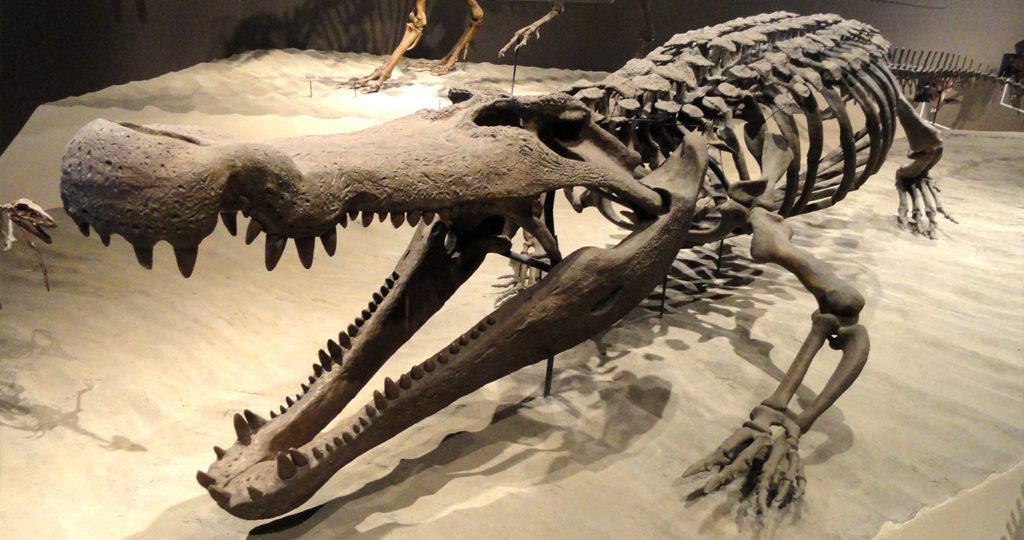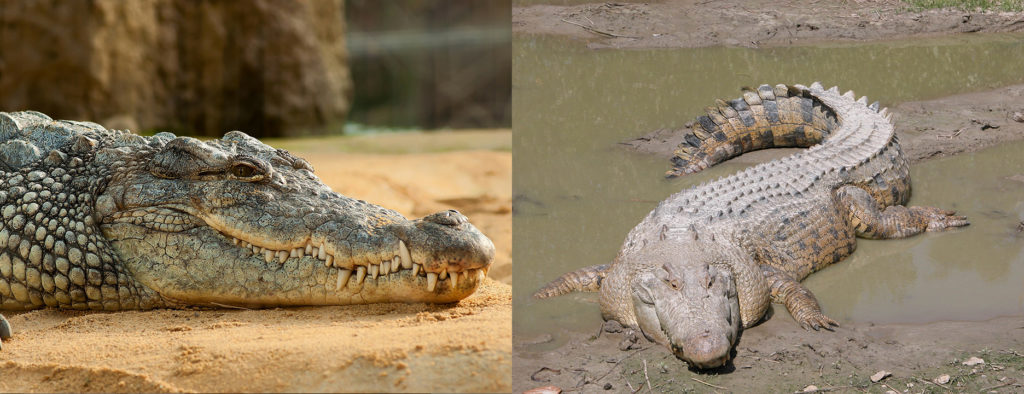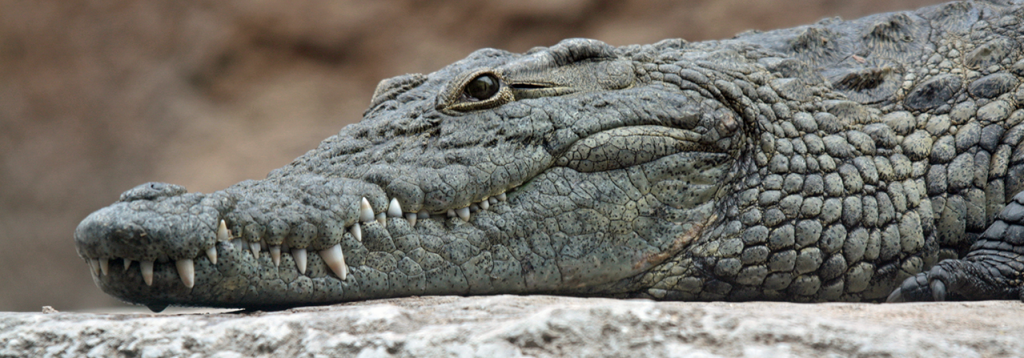
Alligators and Crocodiles – What’s the difference?
At first glance, alligators and crocodiles are very similar creatures. Both are large, squat reptiles with mouths brimming with teeth. In fact, the similarities are so prominent that many wonder if there is a difference between them at all. Despite first appearances, modern crocodilians are a surprisingly diverse group, divided into three families: the alligators (Alligatoridae), the crocodiles (Crocodylidae), and the gavials (Gavialidae).
Alligators (Alligatoridae)
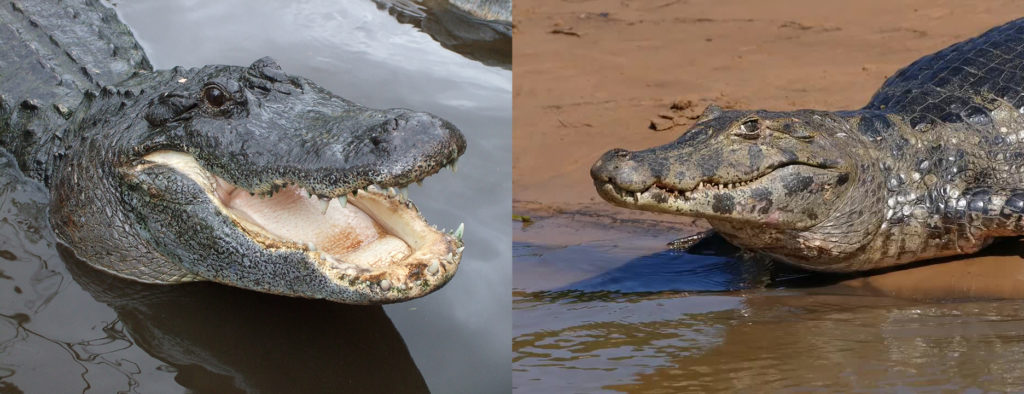
Left: American alligator (Alligator mississippiensis), Right: Yacare Caiman (Caiman yacare, image source)
For those living in the southeast United States, alligators are well known animals. It may come as a surprise, then, to know that, globally, alligators are quite rare, existing only in North America and parts of China. Their family, Alligatoridae, contains the alligators and the smaller (though still fierce) caimans.
Though capable of reaching great size, alligators, on average, are smaller and less aggressive than crocodiles, and are far more likely to run from human beings than to attack them (unless cornered or protecting their young).
Still, it is best to keep your distance.
The quickest way to identify an alligator is by looking at its snout. Unlike crocodiles, which have narrow, “V-shaped” snouts, alligators have broad, “U-shaped” snouts, with upper jaws that extend past the lower, creating a sort of lip that hides the teeth when closed.
Deinosuchus: The Alligator that Ate Dinosaurs?
One of the more famous of the ancient crocodilians, Deinosuchus was a large Antediluvian (pre-flood) predator, capable of growing up to 12 meters in length. Although technically not a member of Alligatoridae, Deinosuchus was very similar to modern alligators and likely occupied a similar ecological niche.
Deinosuchus is often thought of as “the alligator that ate dinosaurs.” While Deinosuchus definitely attacked and ate dinosaurs, fossil evidence suggests that their main food source was actually the large, armored turtles that shared their waterways1).
Crocodiles (Crocodylidae)
Unlike alligators, crocodiles are found all across the globe. They are big, they are mean, and they are everywhere – from the warm waters of the Gulf of Mexico, to the legendary Nile River and beyond.
The success of these reptiles is likely due to the fact that, unlike their smaller cousins, crocodiles can survive in (and, in some cases, prefer) salt water, allowing them to cross oceans and colonize lands that are simply out of reach for the alligator.
This biological trick is made possible by special glands on the crocodile’s tongue that allow it to excrete the extra salt out of its body – a trait shared by other marine reptiles, such as the sea turtle and marine iguana, although the placement of the glands varies between groups.
As mentioned above, crocodiles are identified by their pointed, “V-shaped” snouts that allow the teeth to remain visible even when the mouth is closed.
Gavials (Gavialidae)
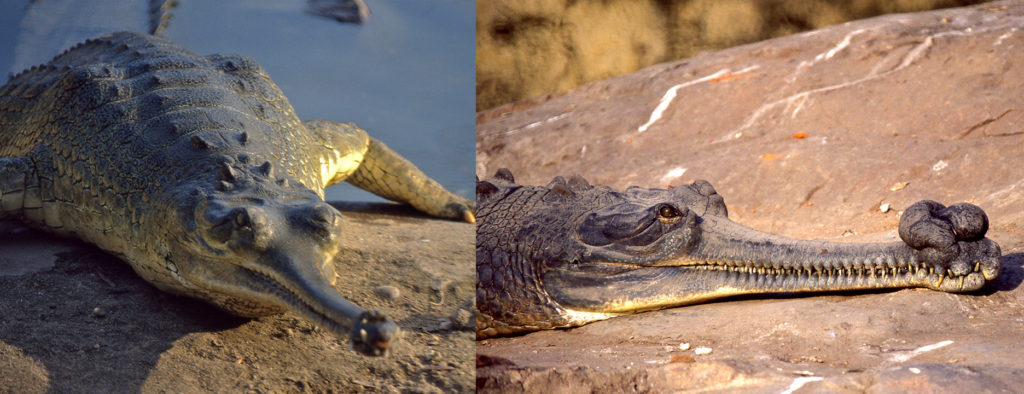
Left: The needle-nosed gharial (Gavialis gangeticus, image source), Right: A male gharial’s shows off his ghara (image source).
Gavials are the third and perhaps most unheard-of group of crocodilians – likely due to their rareness and remoteness. While many species of gavial are known from the fossil record, only one species survives today: the Indian gharial.
Unlike alligators and crocodiles, it’s easy to spot a gavial. With their bulging eyes and narrow, flute-like snouts, filled with sharp, needley teeth, it’s hard to confuse them with their bulkier cousins.
Modern gharials are piscivores, experts at snatching fish with their chopstick-like mouths. The males of the species have a large growth on the end of their snout, called a ghara. Although the exact function of the ghara is poorly understood, it is thought to play a role in courtship and communication within the species.
Sarcosuchus: A Nine-Ton Supercroc
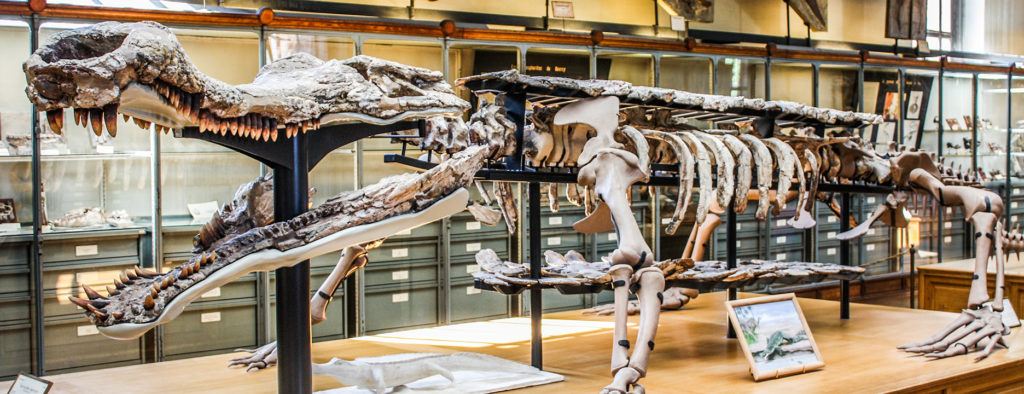
Sarcosuchus imperator on display at the National Museum of Natural History in Paris (image source).
Sarcosuchus (sometimes known as “Supercroc”) was another ancient crocodilian that swam alongside dinosaurs. Growing at least as large as Deinosuchus, it was a heavily armored super-predator.
As with many of the dinosaurs it lived along side (including Spinosaurus and Suchomimus), Sarcosuchus had a long, hooked snout that was well designed for snatching large fish. As members of the species grew older, however, their jaws would begin to broaden, strengthening the skull and allowing them to become more generalized in their diet2).
Because of its similar appearance, Sarcosuchus is often mistaken for an oversized gavial. This is not true, however, as Sarcosuchus belongs to a separate, extinct family, called Pholidosauridae.
Featured image: Nile crocodile at rest (image source)
References
| ↑1 | Schwimmer, D. R. (2010). Bite marks of the giant crocodylian Deinosuchus on Late Cretaceous (Campanian) bones. New Mexico Museum of Natural History and Science Bulletin, 51, 183-190. |
|---|---|
| ↑2 | www.prehistoric-wildlife.com, Darren Pepper. “Sarcosuchus.” Sarcosuchus. Accessed July 22, 2017. http://www.prehistoric-wildlife.com/species/s/sarcosuchus.html. |

